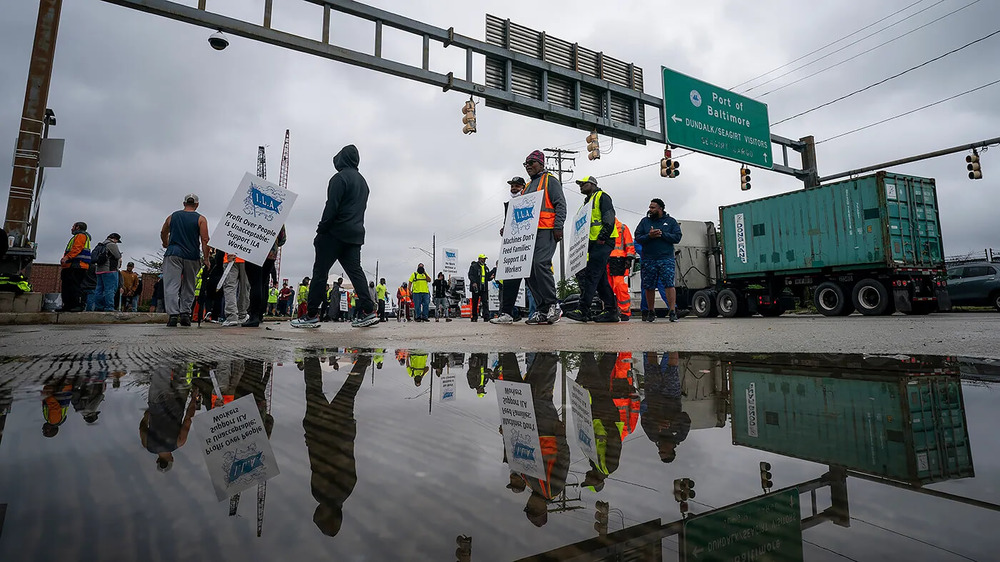The NJSBDC network is working hard to help NJ’s small business owners overcome business issues due to the Coronavirus (COVID-19) pandemic.
Please contact your regional NJSBDC to request remote one-to-one counseling sessions for the resources, options, strategies and guidance needed to help you recover asap.
Be Safe & Be Well
Updated as of 4/6/20 @ 12:55pm
Covonavirus Small Business Support:
Employee Information & Resources
State of New Jersey:
The State of New Jersey has established a special website devoted to business concerns during the Coronavirus emergency. The site, cv.business.nj.gov, will be updated as new information becomes available. We encourage you to communicate this with the appropriate individuals within your organization.
New Jersey Business Action Center (BAC):
In addition, the New Jersey Business Action Center’s Helpline is now available from 8:00 am – 9:00 pm, seven days a week. Call 1-800-JERSEY-7 to address any concerns you or your employees have.
New Jersey Department of Health:
https://www.nj.gov/health/cd/topics/covid2019_schoolbusiness.shtml
New Jersey Department of Labor:
https://www.nj.gov/labor/employer-services/business/covid.shtml
https://www.nj.gov/labor/assets/PDFs/COVID-19%20SCENARIOS.pdf
https://www.nj.gov/labor/assets/PDFs/NJWorkersFAQs.pdf
New Jersey Economic Development Authority (NJEDA)
https://www.njeda.com/about/Public-Information/Coronavirus-Information
NJ Department of Labor Information For Employees regarding Sick Leave:
https://www.nj.gov/labor/worker-protections/earnedsick/covid.shtml
US Government:
FAQs: Employee Retention Credit under the CARES Act
SOURCE: Internal Revenue Service
The Coronavirus Aid, Relief, and Economic Security Act (CARES Act), enacted on March 27, 2020, is designed to encourage Eligible Employers to keep employees on their payroll, despite experiencing economic hardship related to COVID-19, with an employee retention tax credit (Employee Retention Credit).
The Families First Coronavirus Relief Act (FFCRA) requires certain employers to pay sick or family leave wages to employees who are unable to work or telework due to certain circumstances related to COVID-19. Employers are entitled to a refundable tax credit for the required leave paid, up to specified limits. [See FAQs]. The same wages cannot be counted for both credits.
READ MORE:
https://www.irs.gov/newsroom/faqs-employee-retention-credit-under-the-cares-act
Families First Coronavirus Response Act: Employer Paid Leave Requirements
SOURCE: U.S. Department of Labor
The Families First Coronavirus Response Act (FFCRA or Act) requires certain employers to provide their employees with paid sick leave or expanded family and medical leave for specified reasons related to COVID-19.[1] The Department of Labor’s (Department) Wage and Hour Division (WHD) administers and enforces the new law’s paid leave requirements. These provisions will apply from the effective date through December 31, 2020.
Generally, the Act provides that covered employers must provide to all employees:[2]
- Two weeks (up to 80 hours) of paid sick leave at the employee’s regular rate of pay where the employee is unable to work because the employee is quarantined (pursuant to Federal, State, or local government order or advice of a health care provider), and/or experiencing COVID-19 symptoms and seeking a medical diagnosis; or
- Two weeks (up to 80 hours) of paid sick leave at two-thirds the employee’s regular rate of pay because the employee is unable to work because of a bona fide need to care for an individual subject to quarantine (pursuant to Federal, State, or local government order or advice of a health care provider), or care for a child (under 18 years of age) whose school or child care provider is closed or unavailable for reasons related to COVID-19, and/or the employee is experiencing a substantially similar condition as specified by the Secretary of Health and Human Services, in consultation with the Secretaries of the Treasury and Labor.
A covered employer must provide to employees that it has employed for at least 30 days:[3]
- Up to an additional 10 weeks of paid expanded family and medical leave at two-thirds the employee’s regular rate of pay where an employee is unable to work due to a bona fide need for leave to care for a child whose school or child care provider is closed or unavailable for reasons related to COVID-19.
Covered Employers: The paid sick leave and expanded family and medical leave provisions of the FFCRA apply to certain public employers, and private employers with fewer than 500 employees.[4] Most employees of the federal government are covered by Title II of the Family and Medical Leave Act, which was not amended by this Act, and are therefore not covered by the expanded family and medical leave provisions of the FFCRA. However, federal employees covered by Title II of the Family and Medical Leave Act are covered by the paid sick leave provision.
Small businesses with fewer than 50 employees may qualify for exemption from the requirement to provide leave due to school closings or child care unavailability if the leave requirements would jeopardize the viability of the business as a going concern.
Qualifying Reasons for Leave:
Under the FFCRA, an employee qualifies for paid sick time if the employee is unable to work (or unable to telework) due to a need for leave because the employee:
- is subject to a Federal, State, or local quarantine or isolation order related to COVID-19;
- has been advised by a health care provider to self-quarantine related to COVID-19;
- is experiencing COVID-19 symptoms and is seeking a medical diagnosis;
- is caring for an individual subject to an order described in (1) or self-quarantine as described in (2);
- is caring for a child whose school or place of care is closed (or child care provider is unavailable) for reasons related to COVID-19; or
- is experiencing any other substantially-similar condition specified by the Secretary of Health and Human Services, in consultation with the Secretaries of Labor and Treasury.
Under the FFCRA, an employee qualifies for expanded family leave if the employee is caring for a child whose school or place of care is closed (or child care provider is unavailable) for reasons related to COVID-19.
Duration of Leave:
For reasons (1)-(4) and (6): A full-time employee is eligible for up to 80 hours of leave, and a part-time employee is eligible for the number of hours of leave that the employee works on average over a two-week period.
For reason (5): A full-time employee is eligible for up to 12 weeks of leave at 40 hours a week, and a part-time employee is eligible for leave for the number of hours that the employee is normally scheduled to work over that period.
Calculation of Pay:[5]
For leave reasons (1), (2), or (3): employees taking leave shall be paid at either their regular rate or the applicable minimum wage, whichever is higher, up to $511 per day and $5,110 in the aggregate (over a 2-week period).
For leave reasons (4) or (6): employees taking leave shall be paid at 2/3 their regular rate or 2/3 the applicable minimum wage, whichever is higher, up to $200 per day and $2,000 in the aggregate (over a 2-week period).
For leave reason (5): employees taking leave shall be paid at 2/3 their regular rate or 2/3 the applicable minimum wage, whichever is higher, up to $200 per day and $12,000 in the aggregate (over a 12-week period—two weeks of paid sick leave followed by up to 10 weeks of paid expanded family and medical leave).[6]
Tax Credits: Covered employers qualify for dollar-for-dollar reimbursement through tax credits for all qualifying wages paid under the FFCRA. Qualifying wages are those paid to an employee who takes leave under the Act for a qualifying reason, up to the appropriate per diem and aggregate payment caps. Applicable tax credits also extend to amounts paid or incurred to maintain health insurance coverage. For more information, please see the Department of the Treasury’s website.
Employer Notice: Each covered employer must post in a conspicuous place on its premises a notice of FFCRA requirements.[7]
Prohibitions: Employers may not discharge, discipline, or otherwise discriminate against any employee who takes paid sick leave under the FFCRA and files a complaint or institutes a proceeding under or related to the FFCRA.
Penalties and Enforcement: Employers in violation of the first two weeks’ paid sick time or unlawful termination provisions of the FFCRA will be subject to the penalties and enforcement described in Sections 16 and 17 of the Fair Labor Standards Act. 29 U.S.C. 216; 217. Employers in violation of the provisions providing for up to an additional 10 weeks of paid leave to care for a child whose school or place of care is closed (or child care provider is unavailable) are subject to the enforcement provisions of the Family and Medical Leave Act. The Department will observe a temporary period of non-enforcement for the first 30 days after the Act takes effect, so long as the employer has acted reasonably and in good faith to comply with the Act. For purposes of this non-enforcement position, “good faith” exists when violations are remedied and the employee is made whole as soon as practicable by the employer, the violations were not willful, and the Department receives a written commitment from the employer to comply with the Act in the future.
READ MORE:
https://www.dol.gov/agencies/whd/pandemic/ffcra-employer-paid-leave
Congress Finalizes COVID-19 Coronavirus Response Act: Prepare To Provide Paid Sick Leave And FMLA:
https://www.fisherphillips.com/resources-alerts-congress-finalizes-covid-19-coronavirus-response-act
Additional Employee Resources:
Google Tools and Tips:
Google’s help center has suggestions for businesses affected by the coronavirus pandemic, regarding updates to their business information on Google My Business, including:
- Changing your business hours if necessary;
- Adding information about how your business has been affected and what steps you’re taking;
- Creating a post;
- Updating your phone number if necessary;
- To see all of Google’s update suggestions, click here.
Working Remotely?
We encourage you to visit the New Jersey Department of Labor’s website to keep abreast of statewide developments that can directly affect your business and your employees.
But it’s very likely that your business may be forced to work remotely. To assist you in conducting business virtually, we have compiled a list of vendors. We do not endorse one vendor over another but simply provide you with a comprehensive list.
Return to Main Coronavirus page?
If you have additional questions, please contact your regional NJSBDC or visit our website at www.njsbdc.com .
Thank you, be well and be safe.



















